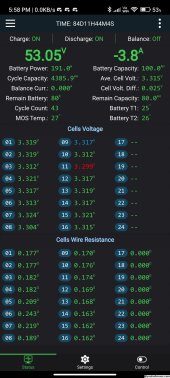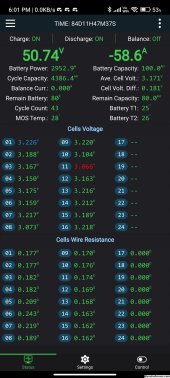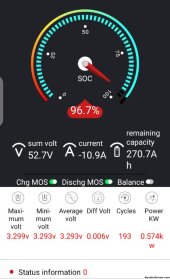I also have the Victron BMS on their so I can do another test tomorrow and compare the two (shunt vs bms). What else should I check with the multimeter?
Using a multimeter to check individual cells and comparing them to what the BMS is telling you, would be a good way to diagnose the issue you're having.
Any progress / updates please?







